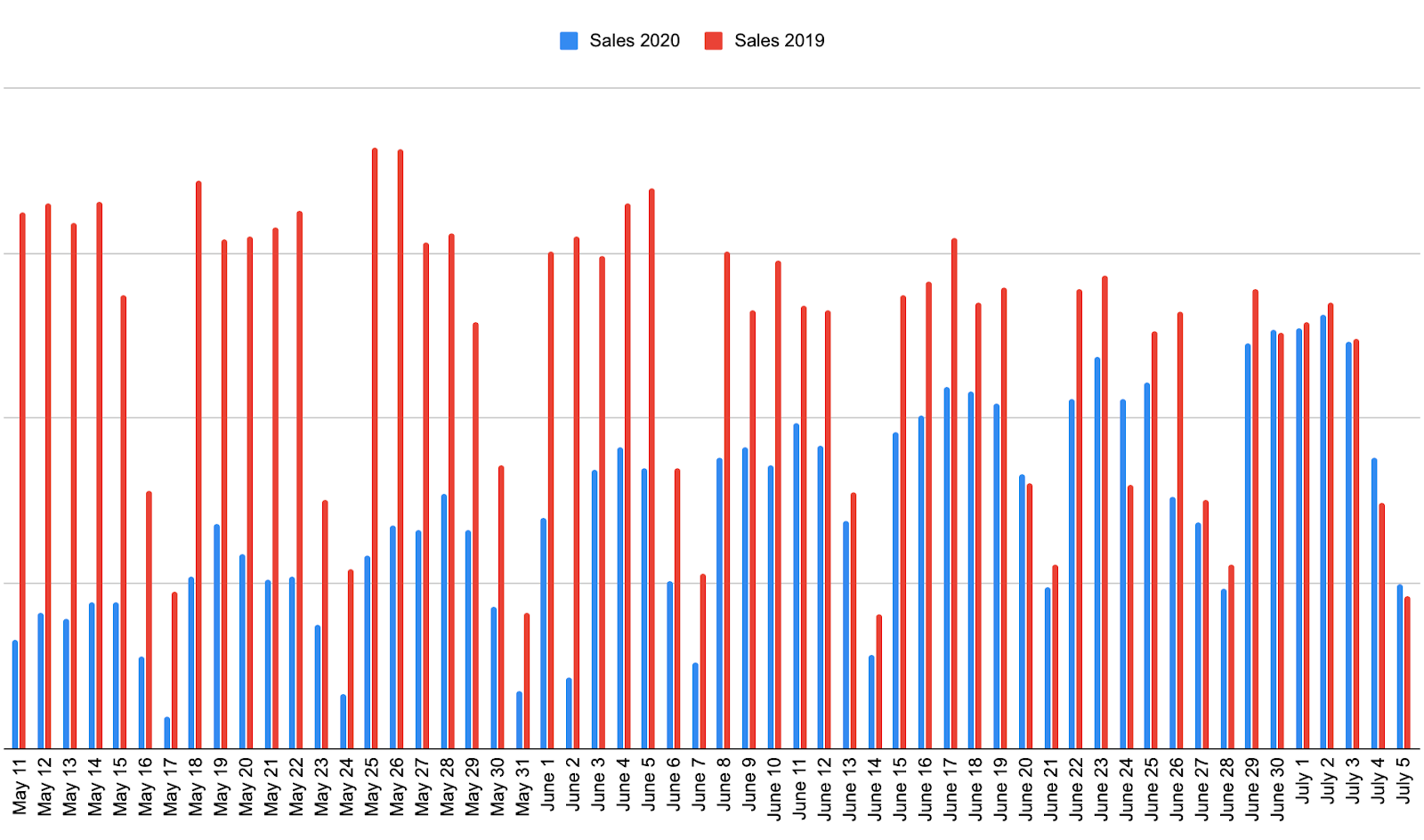OpenMove’s corporate mission is to make people free to move. Unfortunately, the dramatic and unexpected emergence of Covid-19 required drastic measures to limit the freedom of movement during the lockdown phase. Italy was among the first countries in the world to undertake this type of drastic preventative measures but fortunately the improvement of the health emergency has led to a gradual relaxation of the restrictions: since May 4th Italians have been allowed to move to visit relatives, from May 18th the first reopening of commercial activities took place and from June 3rd the possibility of moving between different regions was restored.
We at OpenMove have unfortunately witnessed the ruthless data on mobility in recent months, which have seen our customers operating people transport services forced to work in narrowed margins if not to suspend their activities altogether. Before the epidemic crisis, our MaaS platform for intermodal ticketing and passenger information allowed more than 750,000 people to travel every month: during the peak of the infection, these numbers shrank. This is a real tragedy in terms of production of the passenger transport sector, which has deeply affected our customers and our partners. While many of them are still unable to operate, some have gradually resumed operations, greatly assisted by valuable partnerships in mobile ticketing.
In this post, we try to analyze the recovery of mobility by referring exclusively to the sales of travel tickets through the apps for end users: the OpenMove app (which bears our name) and the other white label apps that we have created starting from the OpenMove WAY platform.
Let’s analyze the last 8 weeks of operation (from 11 May to 5 July 2020) and make a comparison with the same period of last year, being careful to match the beginning of the week and representing the trips on the same graph.

If we look at the data for 2019, we notice the usual traditional decline due to the beginning of summer (the season in which public transport is less used, due to workers’ holidays and thanks to the use of soft mobility), while if we analyze the numbers of 2020, we can immediately notice how the recovery is decisive and constant, with an average weekly increase of 21%.
We can see how the numbers are clearly rising and in the last 7 days they are practically equivalent to those of last year. But does this mean that mobility is back on track? We also asked ourselves and to give an answer we took into consideration the estimates developed by ASSTRA (the National Association of Local Public Transport Operators in Italy):
- decrease during the lockdown until May: 80%
- estimate of the decrease in the months from June to August: 60-65%
- estimate of the decrease with return to school between September and December: 30%
Traditional ticketing systems – which mainly include paper tickets and smart cards – therefore register a reduction of more than 60% compared to the same period of last year, while mobile ticketing has already reached the same numbers as the previous year.
What does it mean? It means that digital ticketing has increased its penetration by +150% and has become an essential tool for promoting personal mobility, for the intrinsic characteristics of ease of use and convenience to which has been added the protection of personal safety. Purchasing tickets via smartphone allows you to avoid going to the ticket offices and avoiding contact with the vending machines and on-vehicle validators, which are invaluable advantages during the recovery from the epidemic.
Mobile ticketing therefore favored a segment of users who during the lockdown gained further confidence with technology and are even more ready to use digital tools.
The public transport market in Italy is estimated to have suffered a loss of around € 1.2 billion due to the Covid-19 pandemic; mobile ticket solutions are poised to offer, in full user safety and convenience, their contribution to the revitalization of public mobility.


